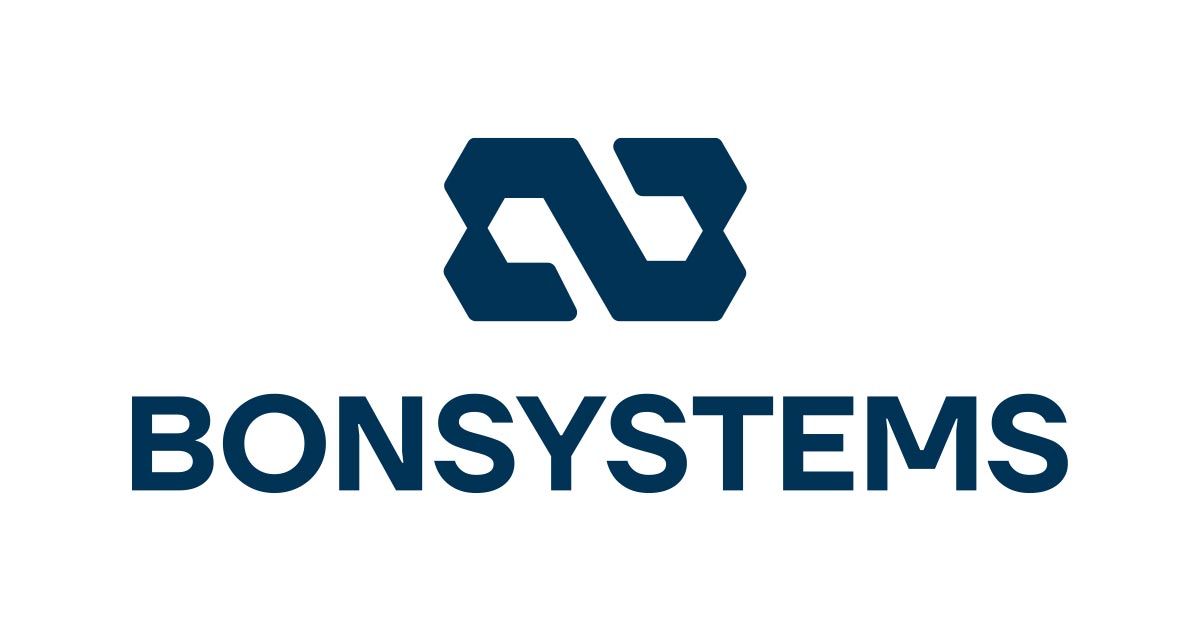Table of Contents
We’re excited to share some great news. This August, Bonsystems is launching a new smart actuator. a highly advanced humanoid robot actuator developed with precision and purpose. Named BCSA (Bonsystems Cycloidal Smart Actuator), this new model is designed specifically to support the evolving demands of humanoid robotics.
As artificial intelligence advances, robots that walk like humans, handle objects, and respond to their surroundings are becoming increasingly familiar. Rather than repeating predefined actions, modern robots are expected to interpret situations, make decisions, and move accordingly. At the heart of this evolution lies one crucial element the robot’s physical movement mechanism.
Even with the smartest AI, a robot with weak drive capabilities or unnatural motion cannot succeed in real world applications. That’s why today’s robot designers are increasingly focused on achieving natural, humanlike movement. a challenge that leads us directly to the actuator.
If AI is the brain of the robot, the actuator is the muscle that brings the robot’s thoughts into motion. But having strong force alone is not enough. A modern robot actuator must be compact, lightweight, and capable of producing enough torque, all while being easy to integrate into the robot’s overall design.
The new humanoid robot actuator from Bonsystems was born from these real world engineering challenges. It delivers powerful torque in a small form factor and integrates easily into the limb mechanisms of humanoid robots. Whether for arms, legs, or joints, the BCSA is designed to support lifelike motion in a way that’s both efficient and scalable.
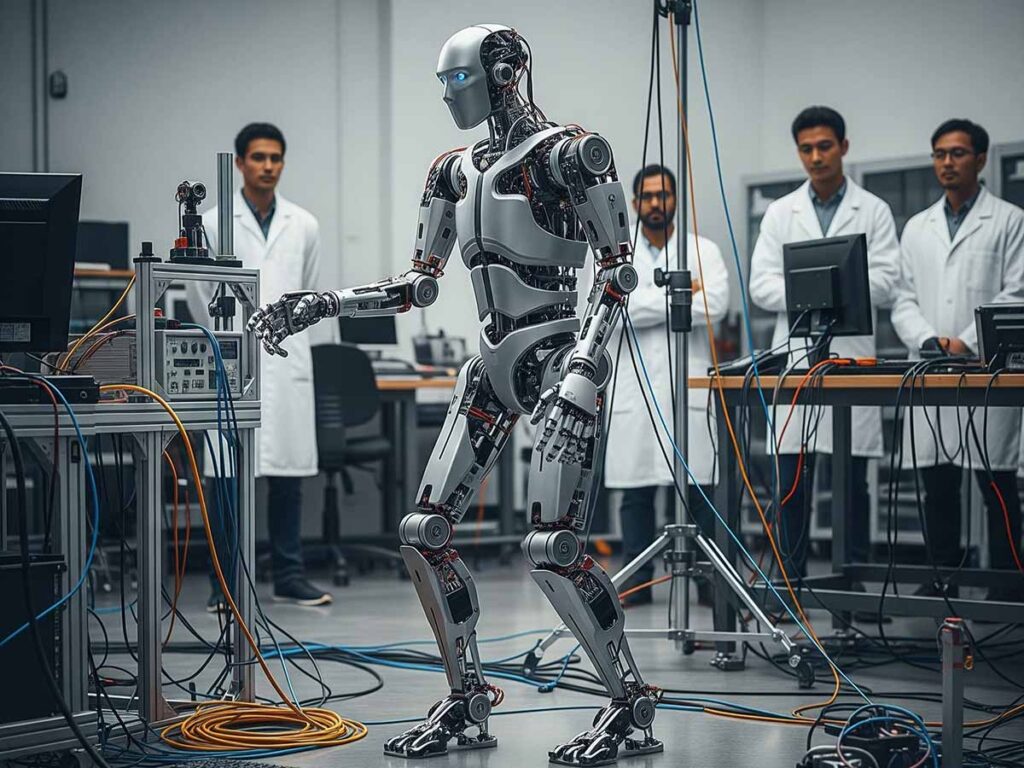
The Era of Humanoids Begins At the Core Stands the Robot Actuator
Robots can no longer be viewed as mere machines. In particular, humanoid robots are designed to move and collaborate alongside humans, which means the demand for humanlike form and motion is stronger than ever. To meet these expectations, humanoids require far more sophisticated mechanical systems than conventional industrial robots, as well as drive mechanisms that allow for smooth and adaptive responses.
At the very center of these capabilities is the robot actuator. When it comes to humanoid robot actuators, several demanding conditions must be met simultaneously. These actuators must be compact and thin, yet deliver sufficient torque. Their movements must be precisely controlled, and importantly, they must support backdrivability.
Backdrivability refers to the phenomenon where force applied at the output shaft causes rotation at the motor input shaft. In practical terms, this means a user can manually move the robot’s limbs even when the power is off. This feature becomes essential for applications such as rehabilitation robots or collaborative robots where physical interaction with humans is common. In such contexts, backdrivability is directly tied to operational safety.
To incorporate all these requirements into a single smart actuator, every aspect must be finely tuned from structural design and material selection to reduction gearing, thermal management, and external form. At Bonsystems, we’ve captured these complex engineering elements in one name: BCSA.
Our smart actuator for humanoid robots reflects not only precision and power but also a deep understanding of how robots are evolving to coexist with humans in shared environments.
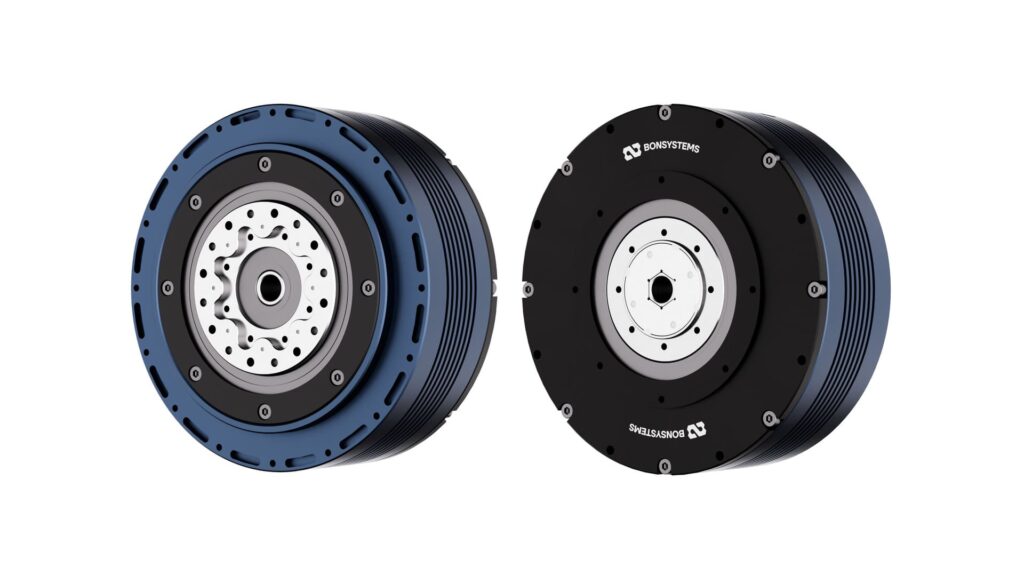
Designing Robotic Motion Key Features of the BCSA Smart Actuator
The BCSA is a next generation humanoid robot actuator developed by Bonsystems, built upon our proven line of smart actuators and powered by proprietary cycloidal reduction technology. This advanced robot actuator has been reengineered specifically to meet the structural and performance needs of humanoid applications.
Despite its slim and lightweight design, the BCSA delivers powerful torque output. It offers excellent adaptability in internal wiring and component layout, which simplifies system integration within humanoid limbs. The actuator also incorporates backdrivability for safe human interaction and a built in thermal management structure to ensure stable operation even under continuous loads.
With the BCSA, Bonsystems has redefined what a smart actuator can achieve in the age of humanoid robotics combining compactness, strength, precision, and safety into one highly integrated solution.
1) Independent Design of Motor and Reducer in the Humanoid Robot Actuator
The most noticeable change is the separation of installation space between the motor and the reducer. This structure in the BCSA humanoid robot actuator is not just a rearrangement of internal components. It is designed so that when a failure or issue occurs, only the necessary section can be quickly replaced or inspected without disassembling the entire unit.
Especially in humanoids, where multiple joints are present, a single drive malfunction can easily affect the entire system. In these cases, a robot actuator with partial accessibility helps reduce maintenance time and cost. It is also convenient for replacing only the motor or the reducer separately, or for testing different configurations during the development phase.
This level of structural accessibility reflects the practical design thinking behind the BCSA smart actuator.
2) Ultra Thin Cycloidal Reduction Structure
The BCSA humanoid robot actuator is built on our proprietary cycloidal gear profile. Compared to conventional gear mechanisms, the cycloidal structure reduces friction and enables high reduction ratios within a single stage. This allows it to achieve both powerful output and durability in one compact design.
The upcoming new product features an even thinner profile. It is engineered to suit limited space applications such as robot wrists, elbows, and knees. The thinner form helps reduce interference between joints and increases the robot’s operating range, laying the foundation for smooth and natural motion.
[Related content: Why Should a Robot Actuator Be Thin?]
3) Cross Roller Bearing and Hollow Output Shaft
The BCSA humanoid robot actuator applies a cross roller bearing to maintain stable output even under environments with repeated heavy loads. The output shaft is designed as a hollow type, allowing sensor cables or rotating shafts to pass through the center. This structure enables clean wiring without external detours, even in complex multi joint designs. It is a crucial feature that ensures greater design flexibility, especially in tight spaces such as wrists or ankles.
4) Thermal Management and Lightweight Structure
One of the most common issues in long duration robot operation is heat. This smart actuator features a structural design that considers effective heat dissipation and utilizes an aluminum housing to reduce overall weight. A lighter structure allows the robot to react more quickly and minimizes unnecessary loads. Additionally, the surface is anodized, giving it a refined and premium appearance. Even when joint parts are externally exposed, the actuator maintains a seamless look that blends naturally into the robot’s overall design.
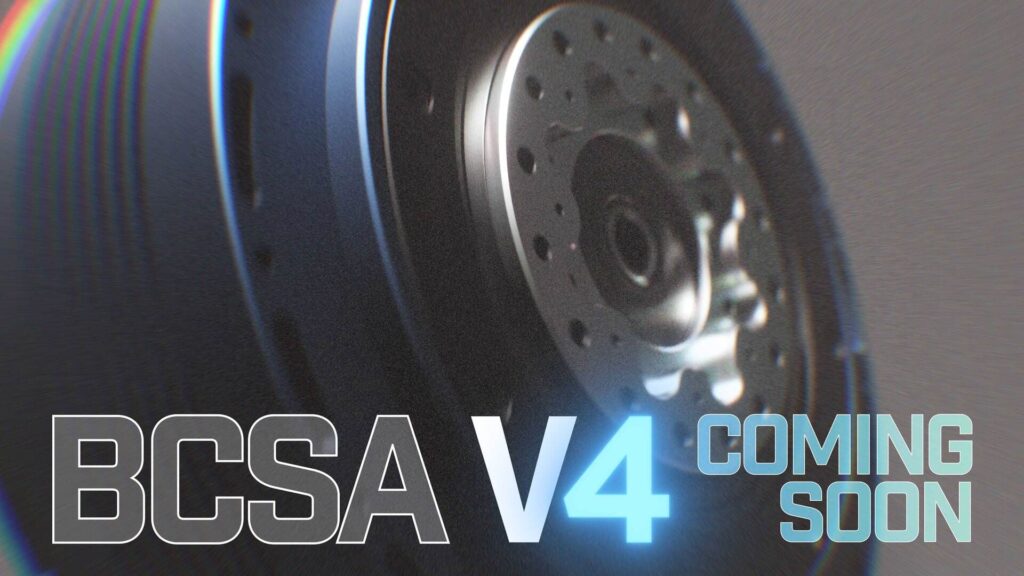
Confidence in the Product
The BCSA began with a clear goal to create a smart actuator that is small, powerful, and flexible. The focus was never just on increasing torque values. It was about solving real world problems that anyone who has actually designed and assembled robots would have faced: actuators that don’t fit into joint spaces, tangled wiring, wear caused by repeated motion, and the inconvenience of having to disassemble the entire unit when something goes wrong.
This humanoid robot actuator was developed to deliver high torque, fit easily into joint areas without excessive strain, and allow for quick response to faults or modifications without requiring full disassembly. Rather than just a component, BCSA is closer to a standalone functional module that integrates naturally into robotic designs.
Instead of relying on flashy performance specs, we focused on creating a robot actuator that is genuinely usable from the perspective of those who build robots. That philosophy is embedded in every detail of this product.
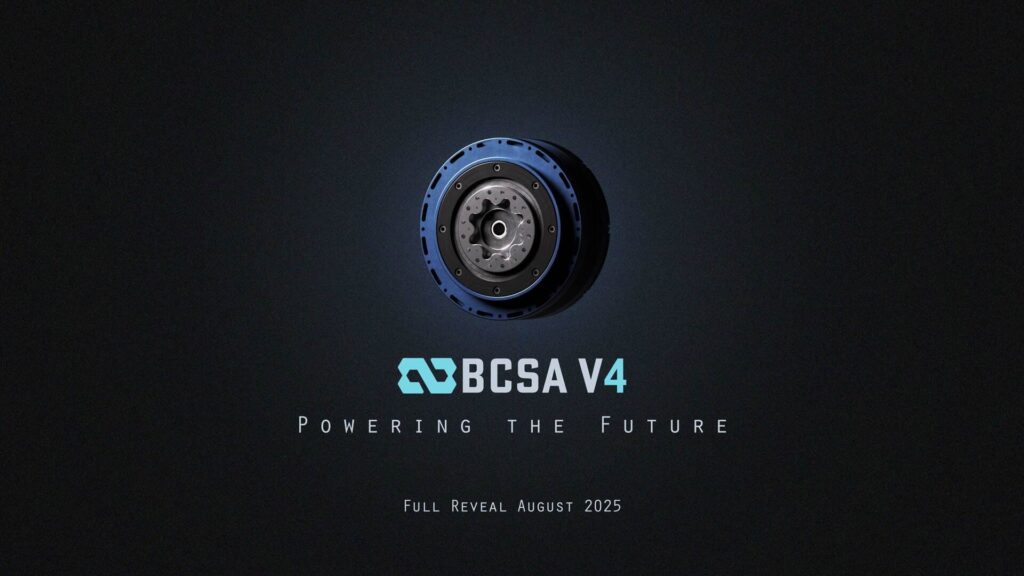
Customization Strategy for Diverse Robot Platforms
The BCSA is not a fixed spec component, but a drive module designed to be adjusted to suit the actual operating environment and structure of each robot. From the beginning, Bonsystems has developed this smart actuator based on the belief that a single actuator cannot serve every type of robot. If a robot’s structure and purpose differ, then the driving method and design of the actuator must also change accordingly.
For example, in autonomous robots like AGVs or AMRs, where mobility and repetitive motion are key, the most important factors are thermal stability during long hours of operation, durability under repeated loads, and the ability to consistently maintain high torque. Since these robots operate all day, motion efficiency and sustained performance are at the center of the design.
In contrast, the demands of humanoid robots are somewhat different. Even during short operation periods, the motion must be natural and flexible like that of a human. Here, response accuracy and backdrivability become essential. A humanoid robot actuator must respond gently when pushed by hand, react instantly to control commands, and drive joints smoothly without mechanical roughness. These features are critical for collaborative or assistive interactions between humans and robots.
This approach reflects Bonsystems’ commitment to creating robot actuators that adapt not only to engineering specifications but also to the role and nature of the robot they serve.
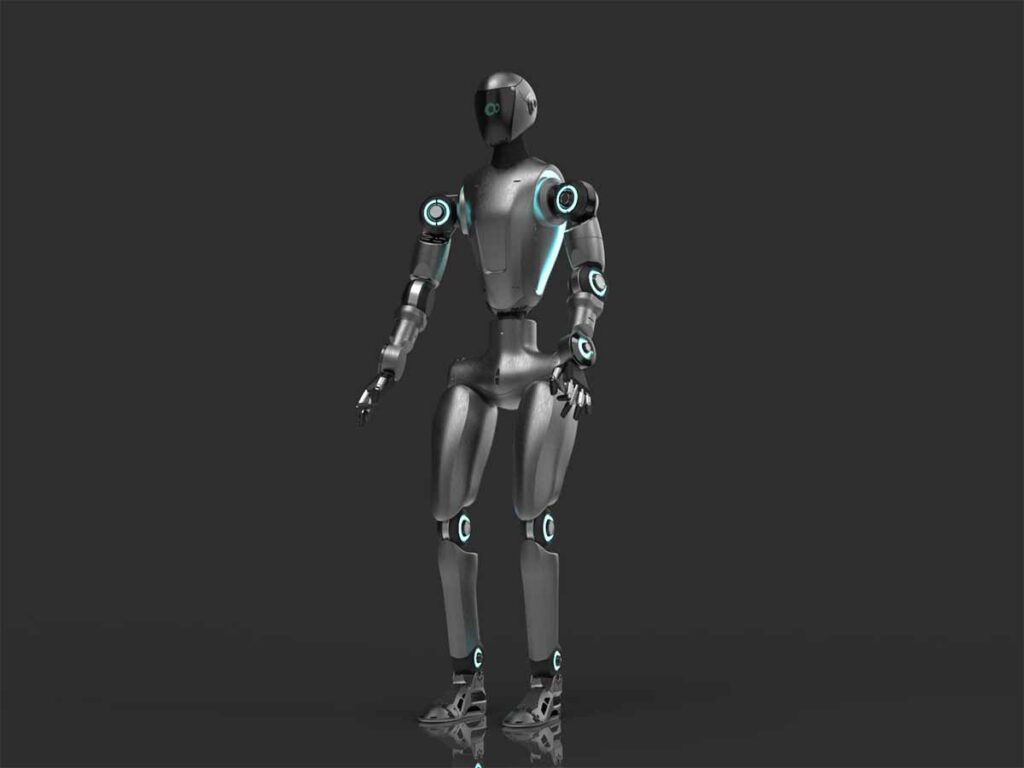
To meet these varying purposes and conditions, the BCSA smart actuator is designed to allow flexible combinations of multiple elements. The reduction ratio can be selected from 11:1 to 49:1, and the output is adjusted based on the required torque. The actuator’s external size and mounting orientation can be adapted to match the robot’s structure, and the hollow output shaft can be optionally applied in cases where cables or rotating shafts need to pass through the center. The actuator is structured to offer optimal combinations according to the motor’s specifications such as voltage, rotation speed, and rated torque.
Even when dealing with the same “arm joint,” the required reduction ratio, torque, and operating radius can vary greatly depending on how fast and what kind of object the robot is intended to pick up and move. In some configurations, tight spaces may require a change in the mounting direction, and in others, wiring must pass through without interfering with other cables.
Without carefully reflecting such specific requirements from the robot side, the design process can become severely constrained, or the robot’s performance may fall short of expectations. That is why we pursue robot centered, not product centered design. The BCSA is not an actuator that forces users to choose from fixed options it is a humanoid robot actuator that allows configuration around the actual structure and function needed.
Performance does not simply mean achieving high numerical values. From this perspective, BCSA is not just a robot actuator built around stats, but one that begins with a clear design intention: to be the actuator that fits a specific robot best.
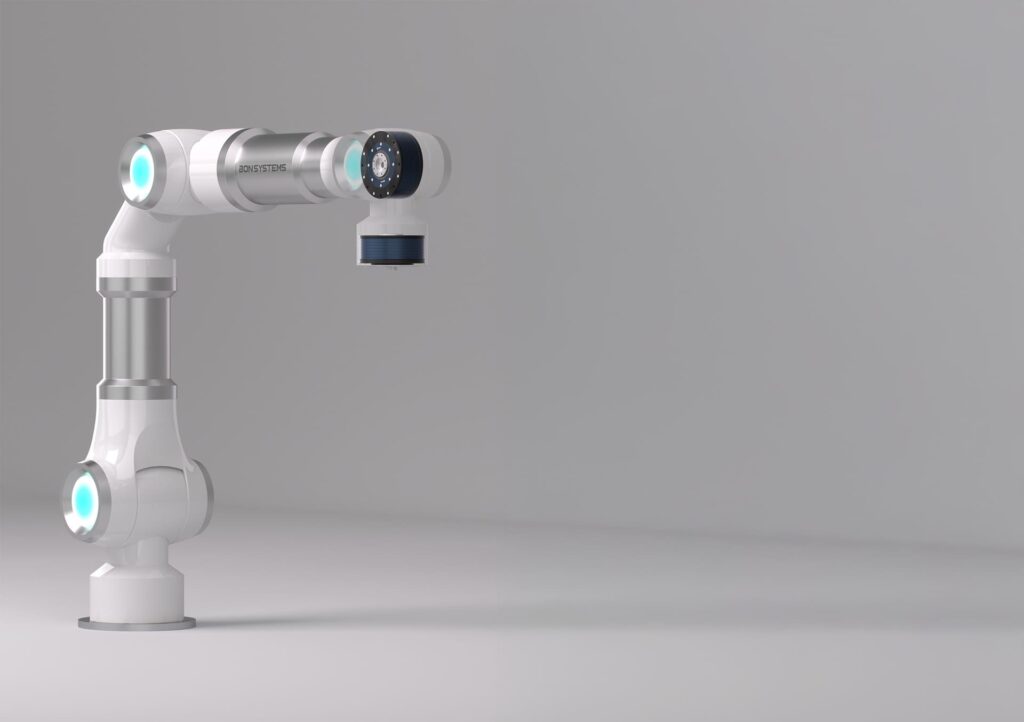
Product Inquiry and Consultation for the New Humanoid Robot Actuator
Based on our expertise in reduction gears and actuators, Bonsystems has been developing compact high torque drive solutions to address real world challenges across various industries. Now, we are refining that technology even further to create a new generation of smart actuators designed for the era of robots moving alongside humans. Our focus is not just on delivering better specs. We aim to engineer drive systems that precisely match the operating environments and mechanical structures of actual robots.
At Bonsystems, we don’t see ourselves as just a parts supplier. We strive to become a partner who understands your objectives and challenges, and helps build practical and convincing solutions together. Issues frequently encountered in joint design space limitations, lack of design flexibility, insufficient torque, heat and noise from repeated motion are the very constraints we aim to resolve through the structure of the actuator itself.
The BCSA humanoid robot actuator, introduced today, is scheduled for release in August 2025. It is already being integrated into a variety of robotic projects. While optimized for humanoids, it continues to evolve flexibly for other platforms such as autonomous mobile robots (AMRs), each with unique purposes and mechanical configurations.
If you have any questions about the upcoming BCSA release, please contact us through the official Bonsystems website. For faster and more accurate consultation, please include specific technical requirements such as torque, reduction ratio, installation constraints, environmental conditions, motor specifications, and your desired delivery schedule.
The more detailed the information, the better we can propose a configuration that fits your needs. Discover a compact and powerful smart actuator designed for the next generation of humanoid robot actuators.
Required torque and reduction ratio
Size or directional constraints of the installation space
Special environmental conditions (e.g., high temperature, humidity, vibration)
Motor specifications to be connected (voltage, rated torque, speed, etc.)
The more specific your information, the quicker our engineering team can propose the most suitable structure for your application. If you are looking for an optimized robot actuator that performs reliably in real world conditions, consider exploring it with Bonsystems.
▶ Check out the BCSA V4 Series, launched on August 29, 2025
Frequently Asked Questions [FAQ]
Q1. How is a humanoid robot actuator different from a standard industrial actuator?
A humanoid robot actuator is designed with a focus on replicating humanlike movements rather than simply delivering high torque or performing repetitive tasks. It must fit into limited spaces with a compact and thin structure and requires both precise control and backdrivability. Therefore, it is built to more complex design standards than general industrial robot actuators.
Q2. What are the features of the product launching in August?
The BCSA incorporates an ultra thin cycloidal reduction structure, cross roller bearing based load distribution, and a hollow output shaft to meet various demands. The motor and reducer are independently designed for easier maintenance in case of failure. Its slim and lightweight form allows installation in narrow areas such as humanoid robot wrists and elbows.
Q3. Why is lightweight design important for a humanoid robot actuator?
Humanoid robots are built to resemble human proportions and appearances, making total weight and center of mass critical factors. A heavy robot actuator can reduce joint responsiveness and make it harder to maintain overall balance. In parts like arms and legs that move repeatedly, weight directly affects energy consumption and battery life, making lightweight design essential for efficiency.
Q4. Why is backdrivability an important feature?
Backdrivability refers to a condition where force applied to the output shaft transfers to the input shaft. In simpler terms, it means the actuator can move in reverse when external force is applied. For humanoid robot actuators that operate near or interact with humans, this is an essential feature for safety and user experience. It is particularly important in collaborative and rehabilitation robotics.
Q5. Can the BCSA be used for robots other than humanoids?
Yes, it can. Although BCSA is designed as a humanoid robot actuator, it is also suitable for other platforms such as AGVs and AMRs. Its structure supports flexible customization, including reduction ratios, torque output, housing dimensions, and hollow shaft options. This makes it adaptable to the unique requirements of different robotic systems.
